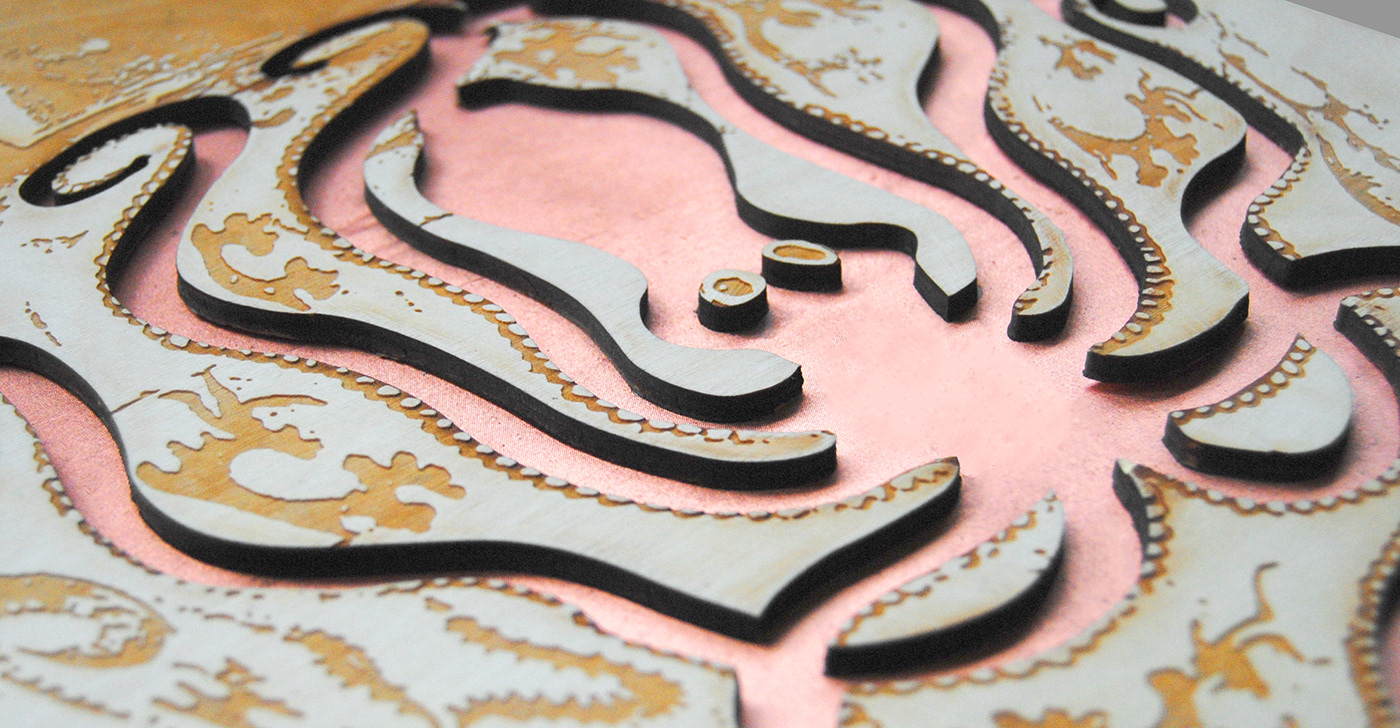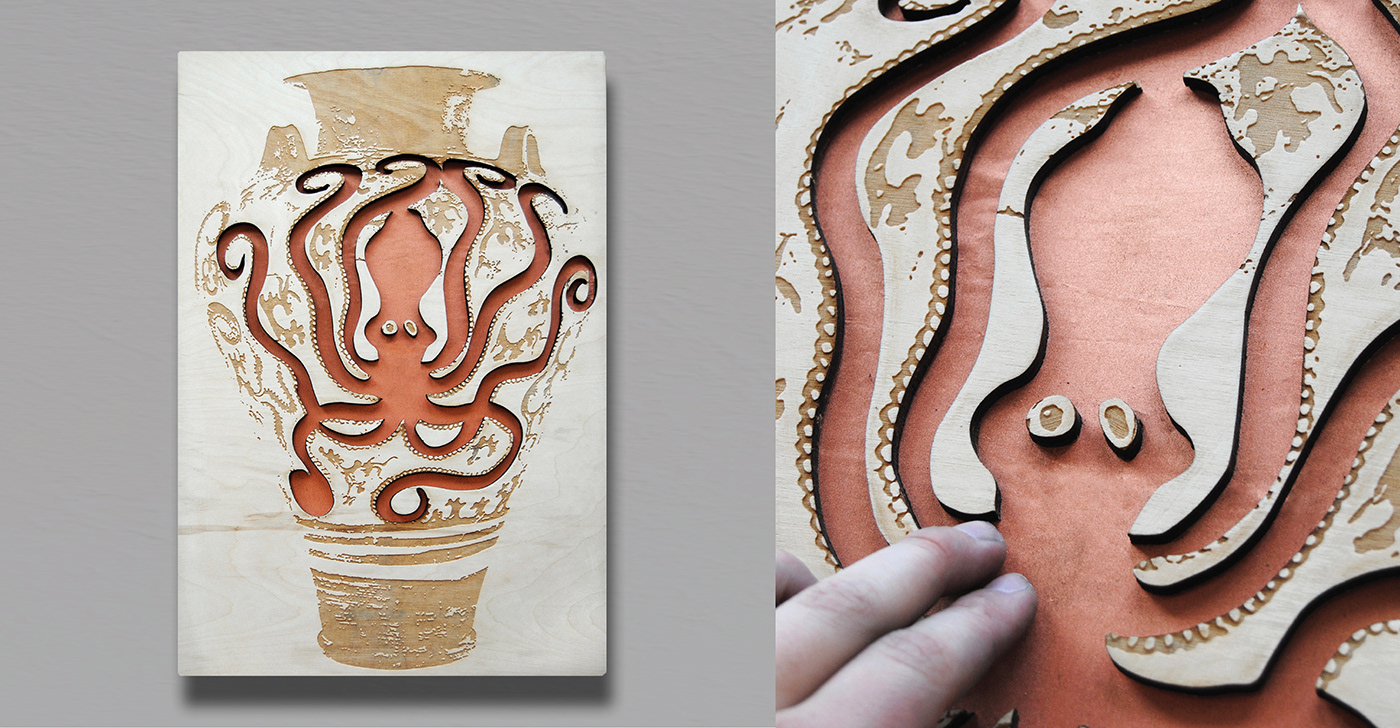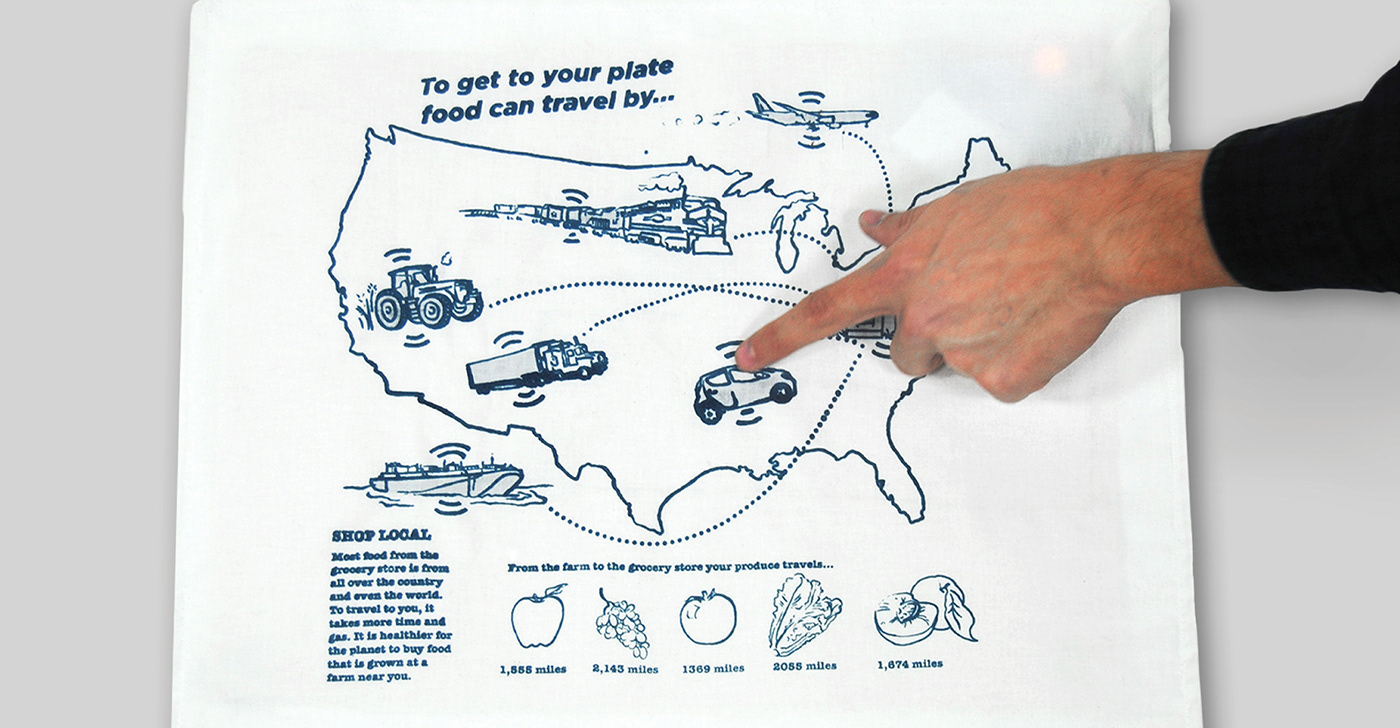Sensory Materials for Museum Education
Art leaves an imprint on people but what if we could leave our own imprint onto a work of art? These projects explore the sensation of touch and sound programmed as a sensory educational tool for those with sensory processing disorders to directly interact with works of art.

Octopus Amphora
While working at an art museum, I taught many children and adults with sensory processing disorders in classes in partnership with the Kennedy Krieger Institute. I noticed that my students would often want to reach for works of art in the museum but were forbidden to touch them.
I created a touch-friendly wooden version of a three-dimensional Greek amphora. Viewers can feel the shape of the laser cut octopus and engraved detail of the vase.
The body of the octopus makes bubble sounds when touched. This additional sensory tool was added by programming the Bare Conductive Touch Board with bubble sounds that was then connected to the conductive copper fabric that fills the octopus’ body.
This interactive artworks aims to delight all who participate in it and helps make museums more accessible and relatable to all ages.


Sustainable Sound Mat
How do we start a conversation around climate change to those younger than us?
How can we educate children on our food system?
Using a screen-printed cotton place mat and Arduino technology (an open-source electronic prototyping platform) kids are able to learn about food production and transportation by touching each transportation icon and listening to its uniquely programmed sound.


Thank you for viewing!


